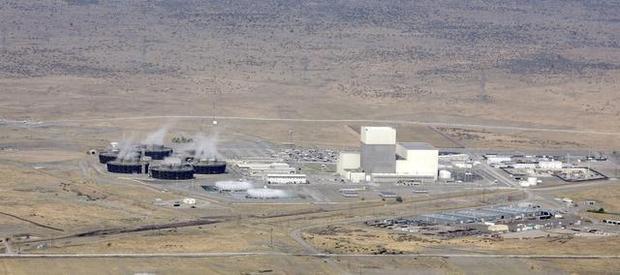forum
library
tutorial
contact

When Should a Nuclear
Power Plant be Refueled?
by James Conca
Forbes, May 11, 2015
|
the film forum library tutorial contact |

|
When Should a Nuclear
by James Conca
|
 As infrequently as possible, if you want to produce the most energy for the lowest cost.
As infrequently as possible, if you want to produce the most energy for the lowest cost.
And infrequent it's been for Energy Northwest's nuclear power plant near Richland, Washington. The Columbia Generating Station just set a personal nuclear best on the eve of Mother's Day when it began it's latest refueling outage after operating for 683 days without stopping once (Tri-City Herald).
The world record isn't much longer - 739 days set by Illinois' LaSalle 1 nuclear plant in 2006.
Columbia Generating Station, operated by Energy Northwest, is the third largest electricity generator in Washington State, behind the Grand Coulee and Chief Joseph hydroelectric dams. For over 30 years,the nuclear plant has been an integral part of Washington State's low-carbon footprint, the lowest of any state in the Union.
During this 683-day run, Columbia produced nearly 18 billion kilowatt-hours (kWhs) of electricity and operated at a capacity factor of over 98%, exceeding any other source of energy in history. This run also continues five years of operations with no unplanned outages.
"This record run is about keeping our commitment to the region to produce clean, reliable and cost-effective power for the long-term," said Mark Reddemann, CEO of Energy Northwest.
Energy Northwest also operates the White Bluffs Solar Station, the Packwood Lake Hydroelectric Project, the Nine Canyon Wind Projectand the Tieton Dam Hydroelectric Project. With a total capacity of 1,300 MW and an average combined capacity factor of greater than 95%, the combined output of these non-fossil fuel systems exceeds 10 billion kWhs/year, enough to power over a million homes, or a city the size of Seattle. All with emitting less than 20 grams of CO2/kWh for less than 5 cents/kWh.
(bluefish does the math: 10 billion kWH/year x 20 grams of CO2/kWH x 1 metric ton/1,000,000 grams = 0.2 million metric tons/year)
So shutting the nuclear plant down is not an insignificant event.
Nuclear power plants run almost all the time, and refuel only once every two years or so. Outages typically occur in the spring or autumn when electricity demand is lowest and there is little winter heating or summer air-conditioning. The interruption of nuclear's constant stream of energy is also most easily handled by other sources during the spring such as hydroelectric.
According to Brad Sawatzke, Energy Northwest's Chief Operating Officer, the lower-than-normal snowpack in the Pacific Northwest means it's important to get the nuclear plant back up and running before the summer warms up.
An outage usually takes only 40 days, so once every two years means the plant operates just under 100% of the time - 98% in the case of this nuclear plant. When Columbia Generating Station starts up again at the end of June it will produce even more electricity, more efficiently and more reliably.
There are many other reasons to shut down a power plant - for maintenance, repair and replacing components - but if everything is running perfectly, you can do all of those things during the occasional refueling outage.
During the outage, more accurate ultrasonic instruments will be installed for measuring the water flow through the reactor core, producing more electricity and saving water. A new Power Range Neutron Monitoring system will be installedfor better fuel use, replacing analog circuit controls with more reliable and redundant digital controls. In addition, three new 175-ton power transformers will be installed.
The benefits of these improvements will allow for a more efficient use of nuclear fuel, an increase in the overall efficiency of reactor operations, and increased equipment reliability.
A refueling outage is also very good for all the other businesses in the area. For this refueling, 1,500 new out-of-town workers will descend upon the plant to supplement the 1,100 permanent Energy Northwest employees, something that local businesses look forward to with every outage (NEI).
The outage will replace 248 of the plant's 764 nuclear fuel assemblies. Fuel is replaced after being in the core for six years, so every two years a third of the fuel is replaced and the other two thirds are moved around to make for even burning.
Many smaller maintenance projects will occur at the same time - 13,000 separate tasks in only six weeks. Sawatzke says, "The team has worked hard and we are well prepared and ready to execute."
If the past is any clue to the future, this outage will go smoothly and on schedule, returning this super-efficient power plant to operation in time for the Fourth of July.
Related Pages:
Columbia Generating Station Represents the Success of Nuclear Power Generation by Robert L. Ferguson, Bellingham Herald, 5/25/15
learn more on topics covered in the film
see the video
read the script
learn the songs
discussion forum
